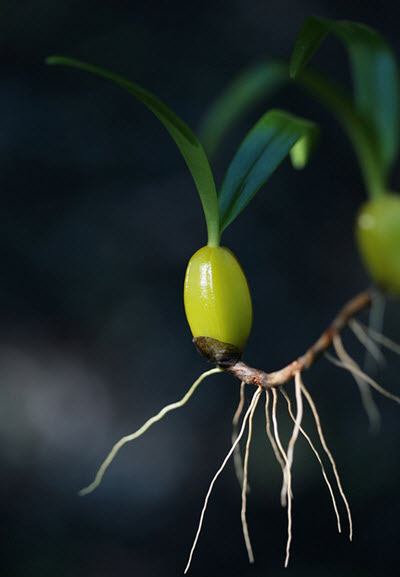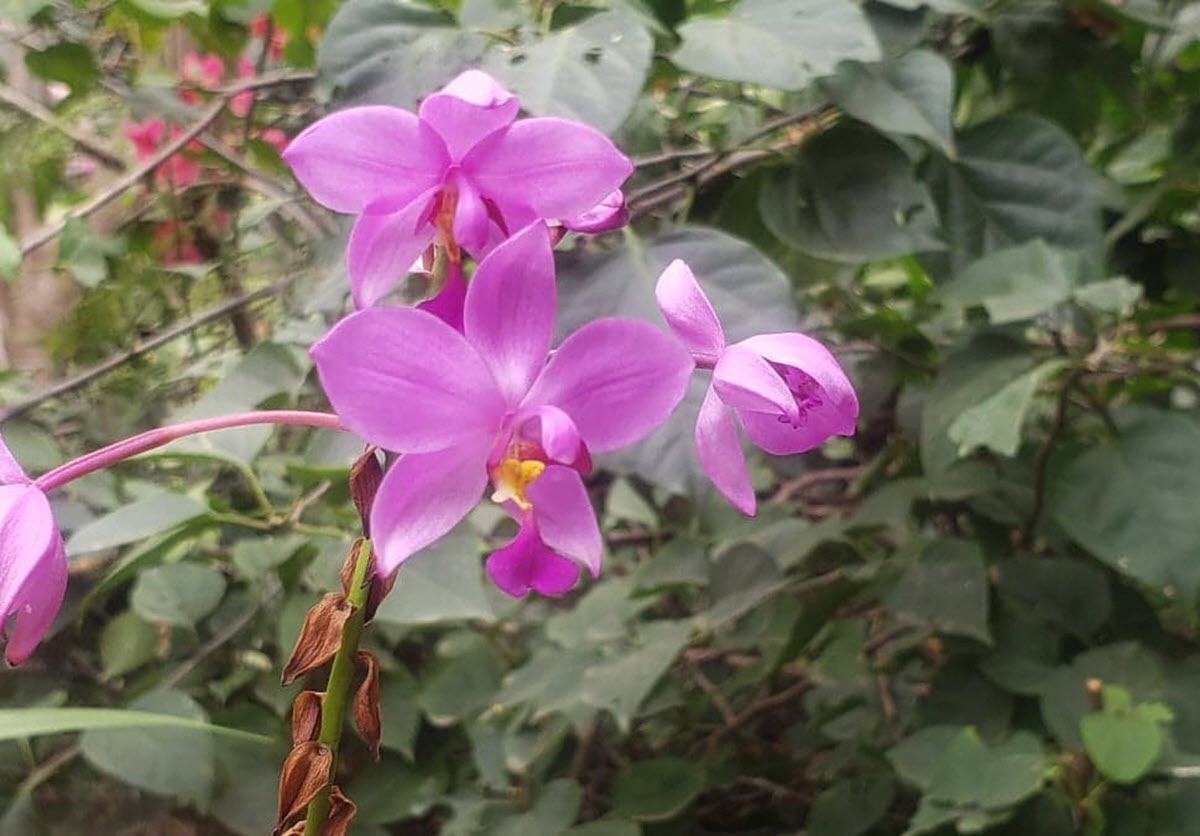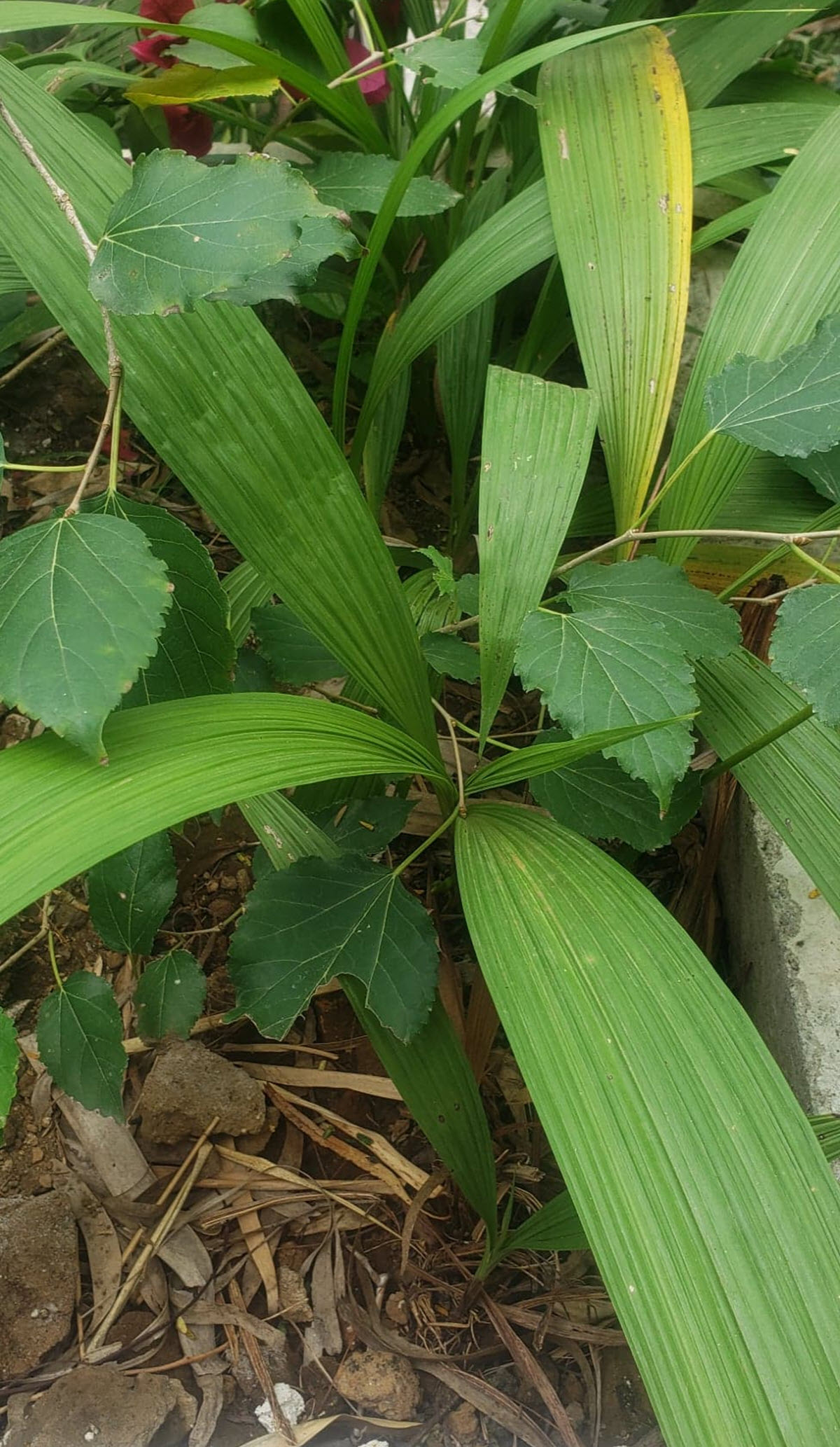Terrestrial Orchids
Contents
Terrestrial Orchids are also referred to as ground orchids. They are orchids that grows on the ground rather then clinging to stones or trees. Most orchids are Epiphytic, IE they grow on trees or in some cases rock surfaces. They use their roots to attach themselves to a tree or a rock. Most people think about Epiphytic orchids when they think about orchids. This is understandable considering that many of the most popular types of orchids including Phalaenopsis and Cattleya are epiphytic orchids.
Terrestrial orchids can however be just as interesting and just as beautiful as epiphytic orchids. There are more than 200 species of terrestrial orchids. This might sound like a lot but the orchid family has more than 28 000 recognized species. Less then 1% of all orchid species are terrestrial.
Introduction to terrestrial orchids

pseudobulb
Different terrestrial orchids have different needs and can look very differently from each other. There are some very large species and some very small species. Some ground orchids have regular roots that grow in the ground but most species have pseudobulbs.
A pseudobulb is similar to a regular bulb but is formed at the base every leaf. They are used for storing water and nutrients. This allows the orchids to survive during periods of less rain. Ground orchids with pseudobulbs do have roots as well but they do not have well developed root systems in the way ground orchids without pseudobulbs do. They do not need the same amount of roots because they are able to store water for when they need it.
Species with pseudobulbs are usually found in dry areas (dry season) while species with well developed root systems are found in areas where the access to water is better. Some species even live in swamp land.
Terrestrial orchids can be found in all climates. Some species are found in the tropics while other species can tolerate cold winters and frost. Many orchids found in colder climates are terrestrial species. Many species living in colder climates are deciduous and lose their leafs during the winter. They sprout new ones in the spring. Orchids that have developed to live in cold climates often require a period of cold (freezing) weather to bloom.
Keeping terrestrial orchids
Potted plants
Many but far from all terrestrial orchids are suitable to be kept as ornamental plats. Tropical species can normally be kept as potted plants. Some species are harder to care for than others. Terrestrial orchids that originates in colder climates are a lot harder to keep as potted plants. They often needs a period of rest in freezing conditions. It can be hard to provide these conditions when kept as potted plants. It can be especially hard to gradually lower and then raise the temperature again. Terrestrial orchids that originates from colder climates are only suitable for experienced orchid keepers that are able to meet their preferences.
Examples pf species that are suitable to keep as potted plants include Phaius, Plione and Spathoglottis species.
In your garden
Many species of terrestrial orchids can do well as garden plants provided you live in an area that offer the right climate for the species. Do not try to keep a tropical species in your garden if you live in the north and do no try to keep a species from a colder area if you live in tropical or subtropical conditions.

Spathoglottis is a popular ground orchid to keep in your garden.
The most important thing to think about if you want to keep ground orchids in your garden is to choose the right species. If you chose the right species than they can be easy to care for and more or less take care of themselves. Research species that are suitable for the climate where you live.
Remember that ground orchids can grow to very different sizes. Some species will remain small and can do well in a flower bed with other flowers. Other species can grow very large and require a large space devoted to them. These species are best kept as solitary plants.
Remember that many orchids are endangered and protected. You are usually not allowed to move any orchids from the wild into your garden. The punishment for doing so can be severe. Please keep in mind that it might also be illegal to move orchids from a friends garden to yours. If it is a native orchid that is protected in your area then the orchids in your friends garden might be protected as well. I recommend that you always chose to buy you orchids from a reputable nursery. There are many available online that will ship the orchids you want directly to your door.

Spathoglottis leaves
Caring for terrestrial orchids
All species have their own unique needs and i strongly recommend that you read a care guide for the exact species you want to keep. This will help make it easier for you to make sure that you give your orchids the right growing conditions. With that said. Here are some general rules that can help you deduct what different terrestrial orchids need.
Watering
Terrestrial orchids with pseudobulbs generally prefer a well drained soil with a lot of organic matter. They prefer it the soil is allowed to dry out between waterings. They require more water. Some species prefer to be kept wet all the time while other species prefer moist but not wet dirt.
Most species do well in low nutrient conditions but benefit from weak nutrients during the growth season.
Light
Most terrestrial orchids prefer a half shaded position. They want a lot of light but not full sun. This is not true for all species. The color of the leafs can give you an indication on whether they need more or less light than they are currently getting. Very dark green leaves indicates that they need more light. Very light green or yellowish leaves indicates that they get too much light. Yellow leaves can also be an indicator of a number of other problems.
Propagation of Terrestrial Orchids
Most ground orchids are easy to multiply. It is usually done through dividing an older plant. Below we are going to look a little closer at how to propagate different types of terrestrial orchids.
Species with pseudobulbs
Ground orchids with pseudobulbs are usually very easy to multiply. All you need to do is to cut a few bulbs (with leaves) from a large orchids and plant them somewhere else. One bulb is enough to grow a new orchid but it is easier to get it to survive if you make sure that the new plant have at least 3 pseudobulbs.
Carefully investigate the plant and see where you can cut loose a baby plant without hurting the plant unnecessarily. Use a very sharp knife or scissors to cut the baby plant lose. I personal use and recommend that you use a straight edge razor to do this. (I bought my Dovo razor here). A straight edge razor can be expensive and is likely not worth the price unless you cut a lot of orchids and other cuttings. If this is the case then a razor blade might be a good cheap alternative.
Backbulbs
It is very common that the oldest pseudobulbs in a plant no longer have any leaves. These bulbs wil eventually die. As they have served their purpose. These pseudobulbs are called back bulbs. Is is possible to cut these pseudobulbs from the plant and use them to grow new plants. The pseudobulbs get triggered to start growing again when they are removed from the plant. Back bulbs can be hard to get growing and it is not an easy way to propagate orchids. It can however be worth to try since these bulbs otherwise will die.
It is often possible to buy back bulbs for a low price and buying back bulbs can be a very economical way to get new orchids if you are able to get them growing again.
Plants with roots
Orchids with roots often grow in groups and these groups can be divided to create new plants. You propagate them in much the same way as you would any other plant that grows in a similar fashion. They are usually very easy to divided provided you do it when conditions are good and that you do not try to divide your plant into too many babies.
Keikeis
Some orchid species , including some terrestrial species, develops baby plants on the top of their stems. These baby plants often develop roots in the air. Once they have developed a few roots they can be cut loose and planted as independent plants. They are very easy to establish provided you leave them on their mother stem long enough. Do not gut them lose until they have a couple of roots that are at least 1 inch long.